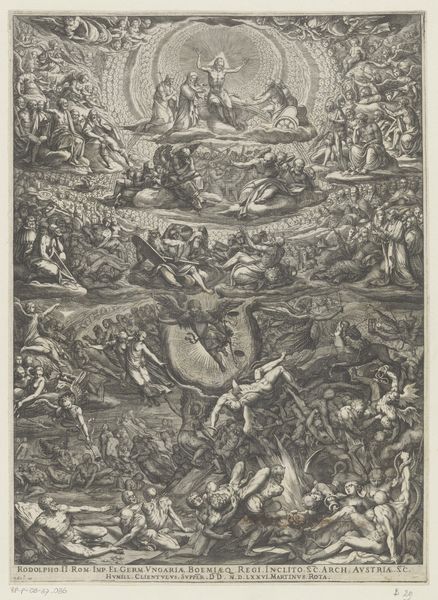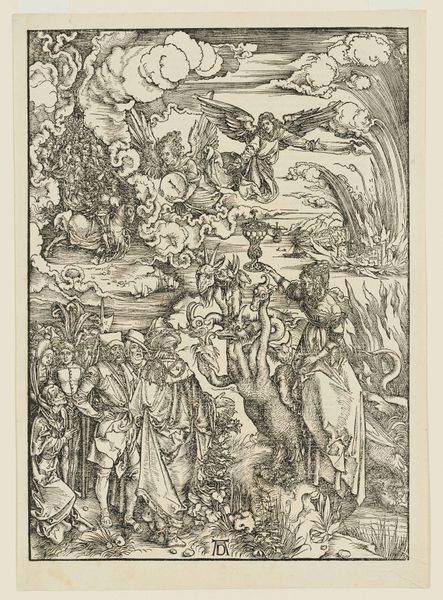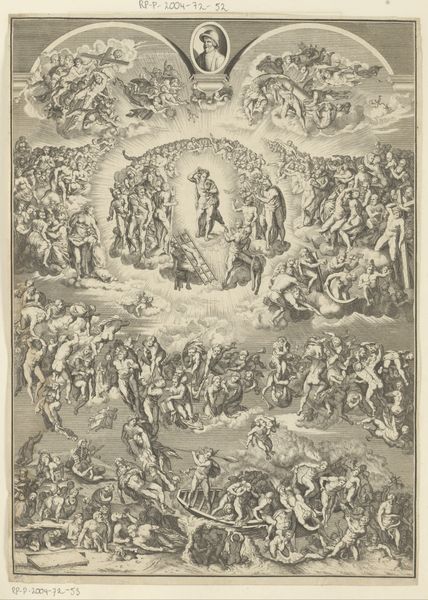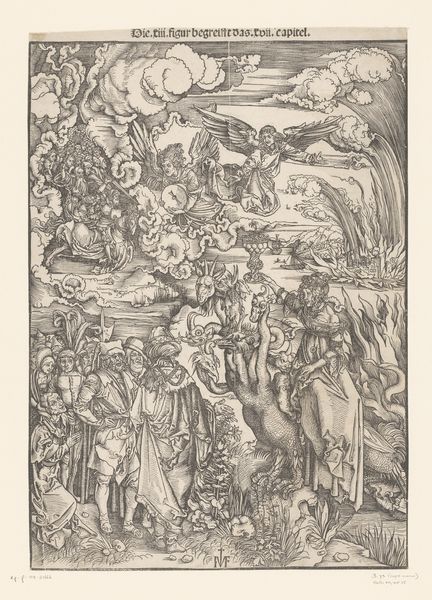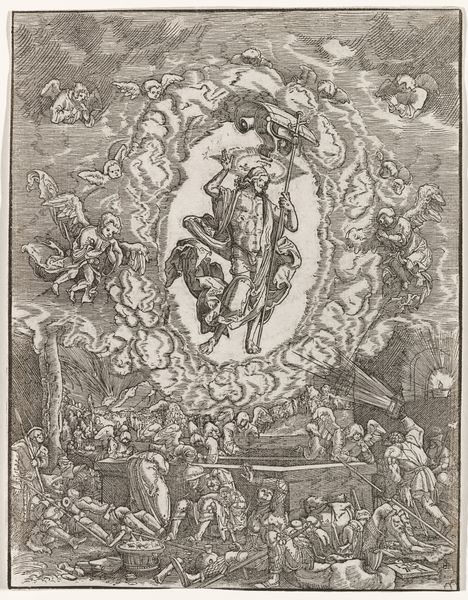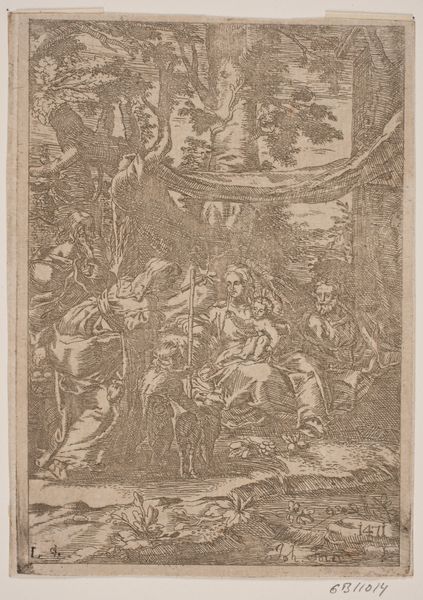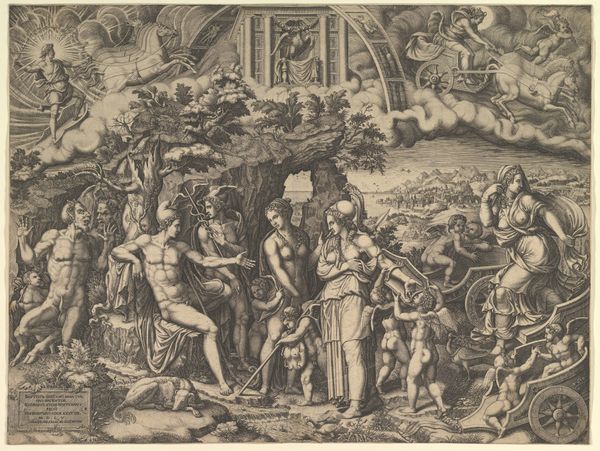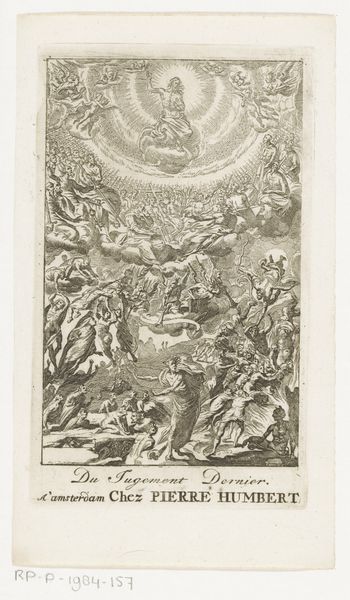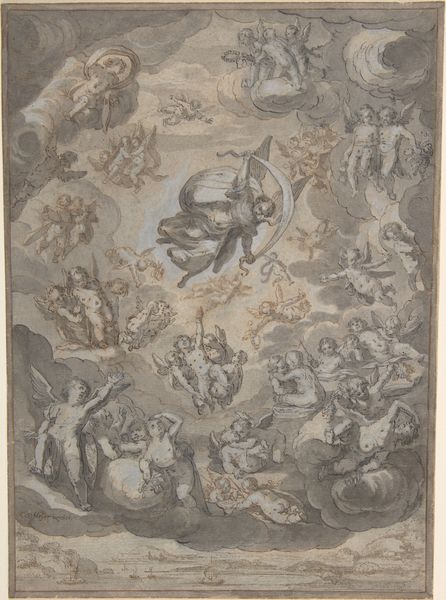
The Last Judgment, Christ at top center surrounded by many figures, below figures sound trumpets and people are being forced from the boat into hell 1545 - 1605
0:00
0:00
drawing, print, intaglio, engraving
#
drawing
#
pen drawing
# print
#
intaglio
#
figuration
#
11_renaissance
#
history-painting
#
engraving
Dimensions: Sheet (Trimmed): 15 5/8 × 14 1/4 in. (39.7 × 36.2 cm)
Copyright: Public Domain
Editor: Here we have an engraving from the late 16th or early 17th century called "The Last Judgement." It's an anonymous work rendered in pen, ink and intaglio. What strikes me most is how chaotic it feels, a flurry of figures ascending and descending, a maelstrom of bodies. What do you see in this piece? Curator: It's fascinating how "The Last Judgment" condenses centuries of cultural anxieties and aspirations into a single image. Notice how the composition itself is divided, heavens above, hell below. It mirrors the psychological struggle between good and evil, the earthly and the divine. This symbolic division permeates cultural memory. Do you observe how the figures aren't simply placed, but seem to be caught in eternal, repeating gestures? Editor: Yes, there’s a sense of perpetual motion and a lack of stillness. Like the artist wants to show that our fate is determined and irreversible. Curator: Precisely. The visual language speaks of cultural continuity – a collective memory of faith and morality. Each figure, each gesture is imbued with layers of meaning drawn from historical narratives. The very act of depicting Judgment reinforces its psychological weight; not merely a biblical event, but a constantly relevant, internalized process. What does the inescapable nature of such "Judgment" evoke in you? Editor: It makes me wonder if such artwork served not just as a reminder, but as a tool of social control, instilling a fear of divine retribution. Curator: Exactly. It served both roles. And that tension – between genuine faith and the manipulation of belief – defines the art's lasting power and potent message across generations. It's the continuous dialogue between visual symbol and our own evolving interpretation of cultural values. Editor: This has completely changed how I look at the work. Thank you. I thought it was simply a biblical scene but now I realize there’s more to it than I thought. Curator: Indeed, art speaks a unique language. The more we explore that language, the more rewarding it becomes.
Comments
No comments
Be the first to comment and join the conversation on the ultimate creative platform.

